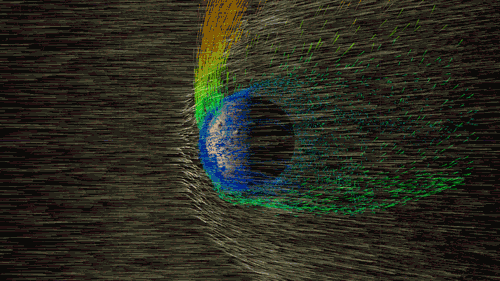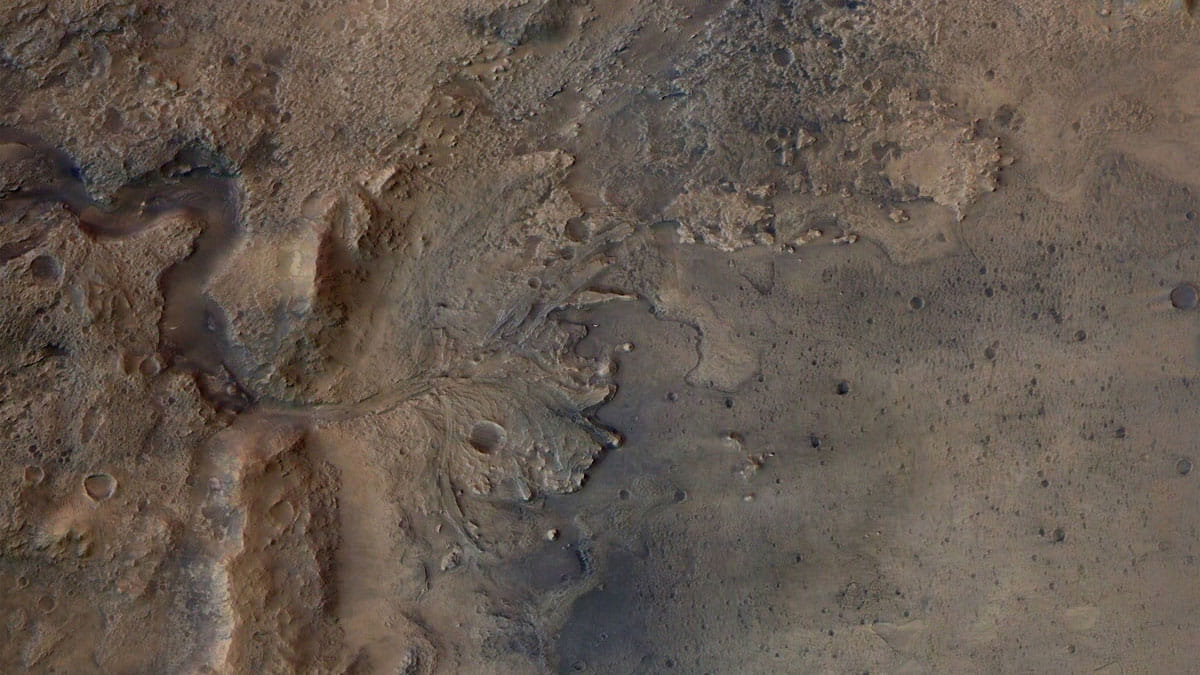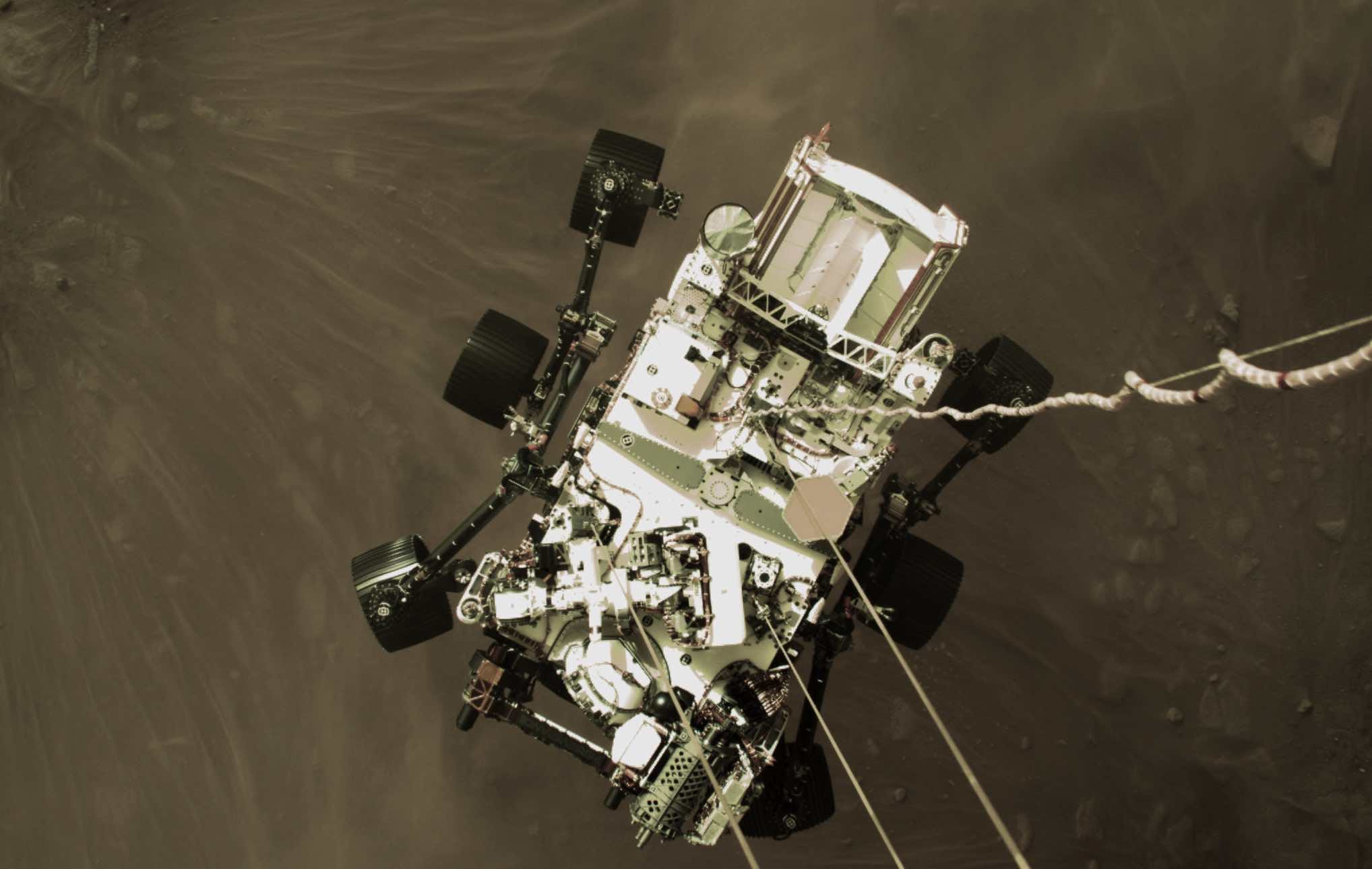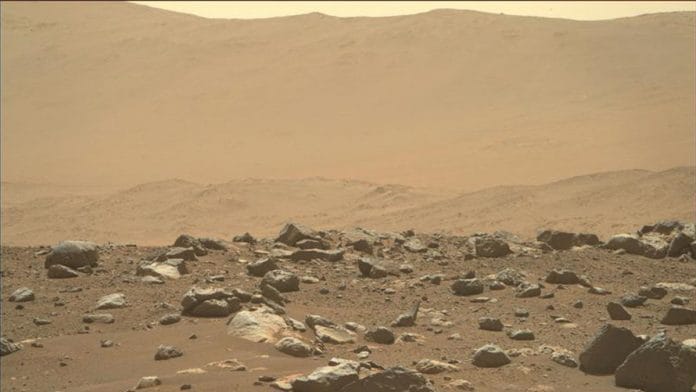Bengaluru: In the past month alone, three missions from Earth reached planet Mars to look for signs of past life — the UAE’s first interplanetary mission, the Hope orbiter, China’s first Mars mission, the Tianwen-1 orbiter and the US’ complex Perseverance rover.
These missions, as is the case with all missions to Mars, are primarily astrobiological in nature and aimed towards hunting for signs of past life, habitability and evolution of the planet from Earth-like conditions to the cold desert it is at present.
To date, a total of 49 missions to Mars have been launched since the 1960s and almost 35 of them have been failures. And yet, missions to the Red Planet continue to be planned due to the immense scope of knowledge that remains to be gleaned from it about our existence and evolution.
Missions to the planet are launched every couple of years because of a time period known as the launch window or launch period. Once launched, these missions land on Mars a few months later.
For instance, all three missions mentioned earlier were launched in July 2020 and arrived at the planet in February this year.
Also read: NASA gives ‘front-row view’ of Perseverance dangling, then landing & audio from Mars
What is a launch window?
A primary objective when it comes to launching a spacecraft is to get it to its target destination while consuming minimum fuel. The optimal time for such a launch is when a launch window opens up, as explained below.
To ensure that a mission succeeds in reaching its destination, a flight path called the Hohmann transfer orbit is followed. This orbit is around the Sun and is elliptical in shape, just like planetary orbits, and the Sun is the focus of this ellipse.
Launch occurs when the Earth is at perihelion or the closest point to the Sun in the orbit, and arrival occurs after the spacecraft has travelled halfway through the orbit, meeting Mars at the aphelion or the farthest point from the Sun.

This is the most energy-efficient path a spacecraft could take and engineers always use variations of the Hohmann transfer orbit to launch to Mars.
The time to optimally launch, when it would take the spacecraft the least time to reach Mars, occurs every 26 months or 780 days due to the nature of the orbits of the two planets — Earth takes 365 days to revolve around the Sun while Mars takes 687.
So spacecraft are launched in 26-month intervals — Mangalyaan and MAVEN launched in November 2013, ExoMars in March 2016, Insight in May 2018, and the latest three missions in July 2020.
This is the reason why the Hope mission, Tianwen-1, and Perseverance launched the same month and also reached Mars the same month. The next optimal time to launch will occur in September 2022.
This period for launch is known as the launch period, often also referred to as the launch window. The launch window, technically, is the time period in a given day during the launch period that the spacecraft must be launched from earth.
Also read: ISRO to launch 19 satellites, including one with Modi’s picture engraved on panel
About the Red Planet
Missions to Mars are typically astrobiological or geological in nature.
This is because the planet is believed to have harboured conditions similar to that on Earth, which means it could have been habitable to life, in the past — billions of years ago.
Additionally, since plate tectonics stopped moving very early on in the planet’s history, two-thirds of the Martian surface is over 3.5 billion years old.
Thus, Mars could hold unhampered evidence of ‘prebiotic’ conditions or conditions before the emergence of life, irrespective of whether life emerged there.
This is especially important considering Mars is geologically older than Earth, even though both planets were formed of the same material and are close to each other.
Mars formed 4.6 billion years ago, while Earth formed 4.5 billion years ago. Thus, if any life existed in the past on the Red Planet, it is likely to have been forming as early as 4.48 billion years ago, around the same time as on Earth, though direct evidence of life on Earth dates back only to 3.7 billion years ago.
Today, Mars is a cold arid desert, with an average surface temperature of −63 degrees Celsius, and is bathed in radiation from the Sun as it has no atmosphere.
This is because after the planet lost its magnetic field, it eventually lost its atmosphere in a slow process called Jeans escape — when the solar wind (ionised particles from the Sun) started to strip its atmosphere and caused gases started to just drift off into space thanks to its low gravity (one-third of Earth’s).

The surface of the planet is red in colour due to the presence of iron oxide and contains other volatiles, or elements that can immediately vaporise, such as sulphur and chlorine. The rocks on the surface were formed from magma, due to volcanic activity, which has since ceased on the planet.
The planet is home to many extinct or inactive volcanoes, including Olympus Mons, which is the solar system’s tallest volcano.
Mars also has two moons, Phobos and Deimos, which are irregularly shaped.
Internally, Mars is similar to Earth. It has a differentiated interior, which means that there is a core, mantle, and crust. The core is made up of iron and nickel, and there is at least an outer core that is liquid.
Earth’s liquid core spins and produces a geodynamo effect, creating a protective magnetic field around our planet. However, the Martian core, much smaller in size, cooled rapidly and is spinning a little too slowly to be able to sustain its previous protective magnetic field.
Due to the lack of atmosphere and magnetic field, the planet has lost its protective properties, and any life it might have held in the past — if it did — is thought to have disappeared. However, there is a very unlikely chance that microbial life could be surviving deep underground, in reservoirs of subsurface water or lakes.
Since the atmospheric pressure on the surface of Mars is only 1 per cent of the Earth’s, water cannot exist as a liquid on the surface. However, during the warmest months of the year, salty water flows in some regions, as it can exist as a liquid even below the freezing point of water.
Mars’s two permanent polar ice caps consist of both water ice and carbon dioxide ice or dry ice.
Also read: India’s next Mars mission likely to be an orbiter, ISRO to also explore Venus
Mars in the past
Astrobiologically speaking, liquid water gets scientists excited like nothing else, and for good reason. It is thought to be a crucial and necessary ingredient for life as we know it.
Since it’s a liquid, water can move materials needed for chemical reactions around as well as enable a flow of nutrients. It stays liquid over a wide range of temperatures and pressures and acts as a universal solvent — dissolving more substances than any other liquid.
When water freezes as ice in water bodies, it’s only the top layer that freezes (as ice floats), and the liquid underneath remains warmer, thus helping preserve habitable conditions. This has preserved and enabled life on Earth in the past during its multiple ice ages, which marine fauna have survived.
The presence of liquid subsurface water on moons like Jupiter’s Europa and Saturn’s Enceladus is the reason why there is extreme curiosity around these bodies and future missions are planned to these destinations.
Underground lakes of water have also been discovered on Mars, which hold promise for potential exploration.
Mars is thought to have held liquid water on the surface in the past, as evidenced by surface formations like plains and outflow channels on the Martian soil, which could have been carved only by flowing water.
There are multiple sites on the planet that hosted water in the past, including the Gale crater which is being explored by Curiosity and the Jezero crater, where Perseverance is currently situated.

Mars also has organic compounds beneath the surface that are very similar to the kind of molecules found in Earth’s soil.
Additionally, past missions have also confirmed the presence of methane in the atmosphere seasonally, likely trapped in ice and released during summers, much like from the Siberian permafrost in Russia.
Methane is released by either biological processes (from both microbial life and larger plants and animals on Earth) or geological processes, both of which are currently not present on Mars from what we understand of the planet.
The gas may not even be actual evidence of past life, but it does give an insight into early Mars, which was warm, with a temperature-regulating atmosphere, organic-rich and had flowing liquid water on the surface — all of which are similar to Earth.
While Mars is not geologically active and there is no flow of magma or plate tectonics, it is still seismically active, producing mysterious marsquakes, which probably occur because of the planet shrinking from cooling and fracturing the brittle outer crust.
Also read: In a first, ISRO to launch PSLV-C45 with three-tier orbit deployments
Current Mars missions and their objectives
There are currently two active rovers on the planet, both from NASA — Curiosity and Perseverance.
Curiosity is currently exploring the Gale crater, an ancient lakebed that contains records of water flow in its rocks. The rover is studying the area’s climate and geology as well as investigating the habitability of this region.
Perseverance is based on the design of Curiosity as well, although it is much more sophisticated with several additional cameras and the first two microphones. Perseverance is a fully astrobiological mission, studying the Jezero crater, another ancient lakebed, for habitability and signs of past life.

There is also the stationary robotic lander, InSight, NASA’s stationary robotic lander that studies the deep interior of the planet and records marsquakes.
There are eight orbiters currently studying the planet: NASA/JPL’s Mars Odyssey, Mars Reconnaissance Orbiter and MAVEN; European Space Agency’s Mars Express; the ESA/Roscosmos collaboration ExoMars Trace Gas Orbiter, ISRO’s Mars Orbiter Mission (Mangalyaan), Chinese CNSA’s Tianwen-1, and UAE Space Agency’s Hope orbiter.
These orbiters study the planet’s atmosphere, scout for signs of methane, study the effects of solar radiation, the Martian geology, planetary evolution, climate, the presence of liquid water and hunt for evidence of past life.
Also read: Mars, Moon & a fresh pair of eyes in the sky — the big space missions planned for 2021
Future on Mars
There are several future missions planned to Mars, including India’s Mangalyaan-2 orbiter, which is set to launch in 2024. India’s first mission was a technology demonstrator but the second is likely to be scientific in nature with more payloads and complex science objectives.
In 2022, the EU-Russian collaborative Kazachok lander/ Rosalind Franklin rover and Japan’s Tera-hertz Explorer (TEREX) mission that consists of an orbiter and rover, will launch.
Japan also plans to send the Martian Moons Exploration (MMX) orbiter in 2024.
Apart from government agencies, there are also private missions that may fly to Mars soon. These include SpaceX’s unconfirmed Starship demo mission, which will carry both a lander and cargo. SpaceX CEO Elon Musk has indicated that humans could fly to Mars within the next decade as well.
However, transporting humans to Mars and keeping them alive there is no easy task. There are immense difficulties to overcome such as protection against the intense radiation both during the journey to Mars as well as on the surface, lack of liquid water and the extremely cold temperatures.
Since Mars is so far away and trips can be planned only every 26 months, there is also an increased risk of safety, lack of emergency access and the psychological and sociological effects of isolation. The latter include symptoms like anxiety, depression, schizophrenia, fatigue, sleep disorder, inability to focus and irritability.
Additionally, spaceflight and low gravity also induce physiological problems including loss of muscle mass and bone mass, slowdown of cardiovascular system due to low gravity, and other psychosomatic stresses that manifest as physical symptoms including motion sickness, which can trigger vertigo, headaches, nausea and lethargy. Astronauts have also experienced weakness and lowered aerobic capacity or oxygen intake.
Spaceflight and low gravity also enable microbes to grow more virulent, as evidenced by experiments on the International Space Station (ISS). This can cause more severe diseases, which can put human settlers on the planet at risk.
Humans will also need a power supply, oxygen, vehicles to move around, radiation-proof living habitats, and the ability to derive drinking water from existing ice on the planet.
Furthermore, before going to the planet, humans first have to ensure that the planetary protection criteria are met. This refers to preventing contamination of any possible life on Mars by life from Earth — microbial or otherwise, which is mandated by an international treaty called the Outer Space Treaty, and all countries that are party to the treaty have to follow protocol.
As a result, sites with water and water ice first need to be confirmed to hold no life before humans can access them. Carefully disinfected robotic missions are likely to go to these regions first while the missions to collect samples simultaneously work on the planet before human missions are approved to Mars.
Also read: SpaceX Starship SN9 crash lands amid escalating tensions with US aviation body FAA






